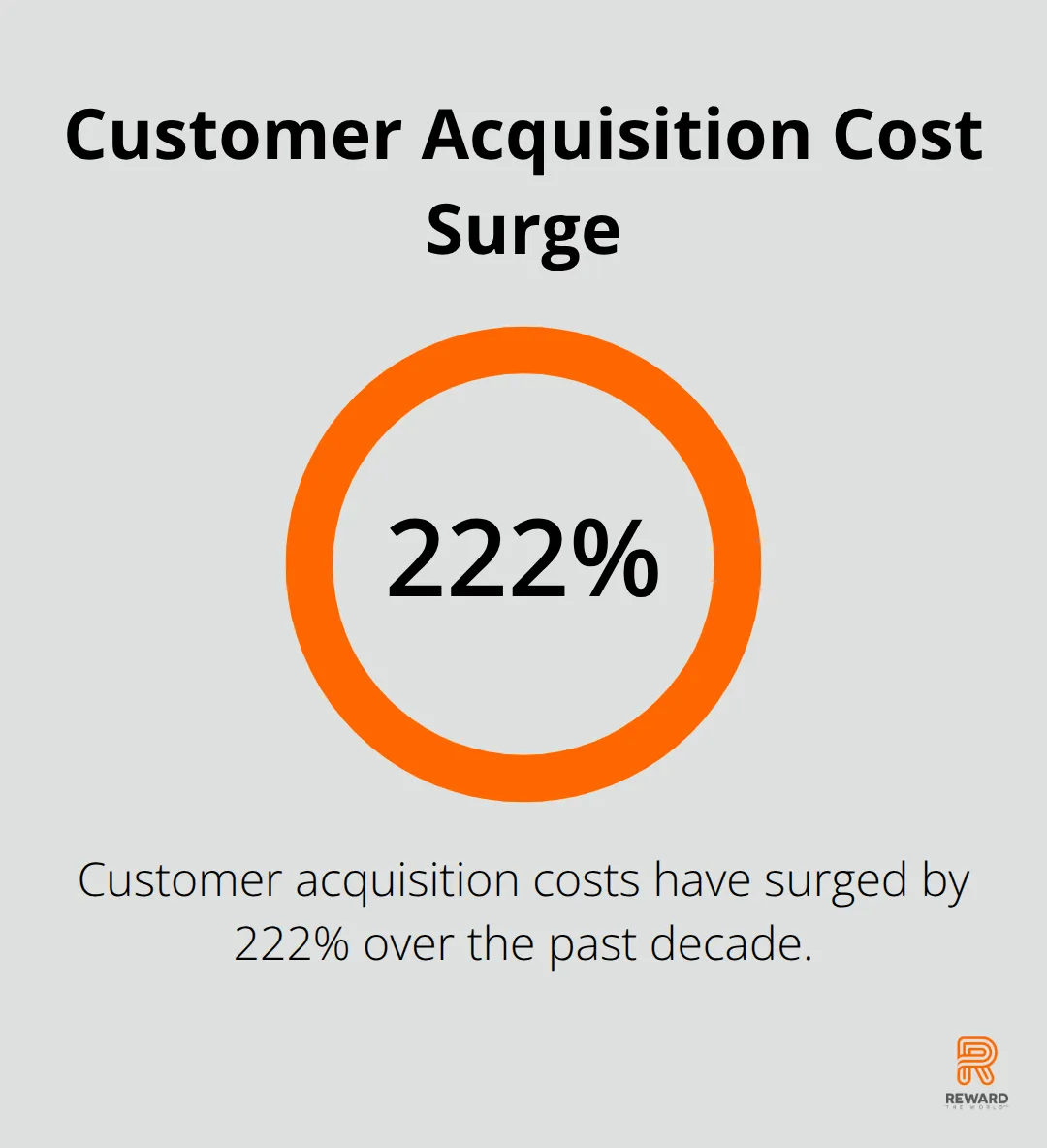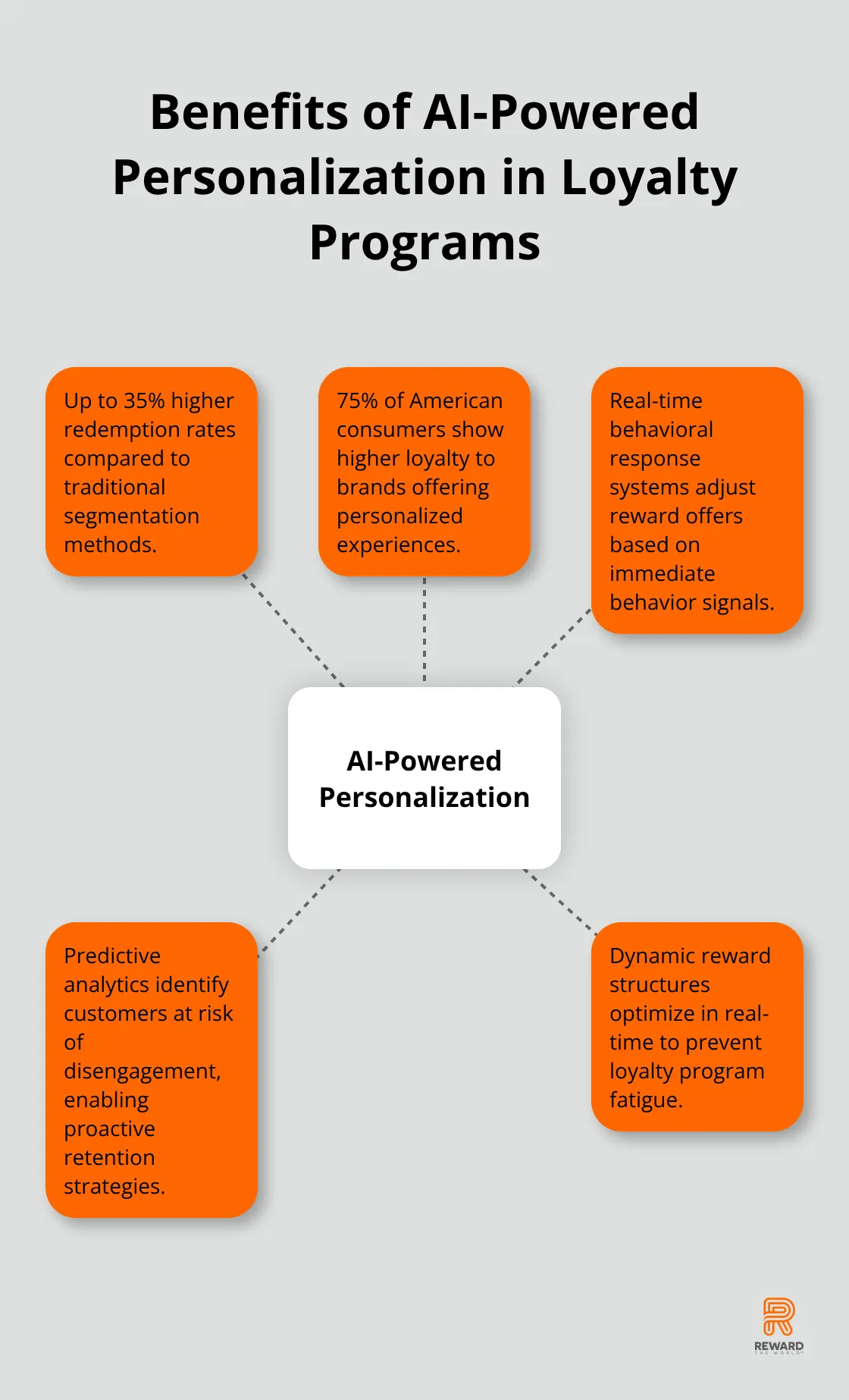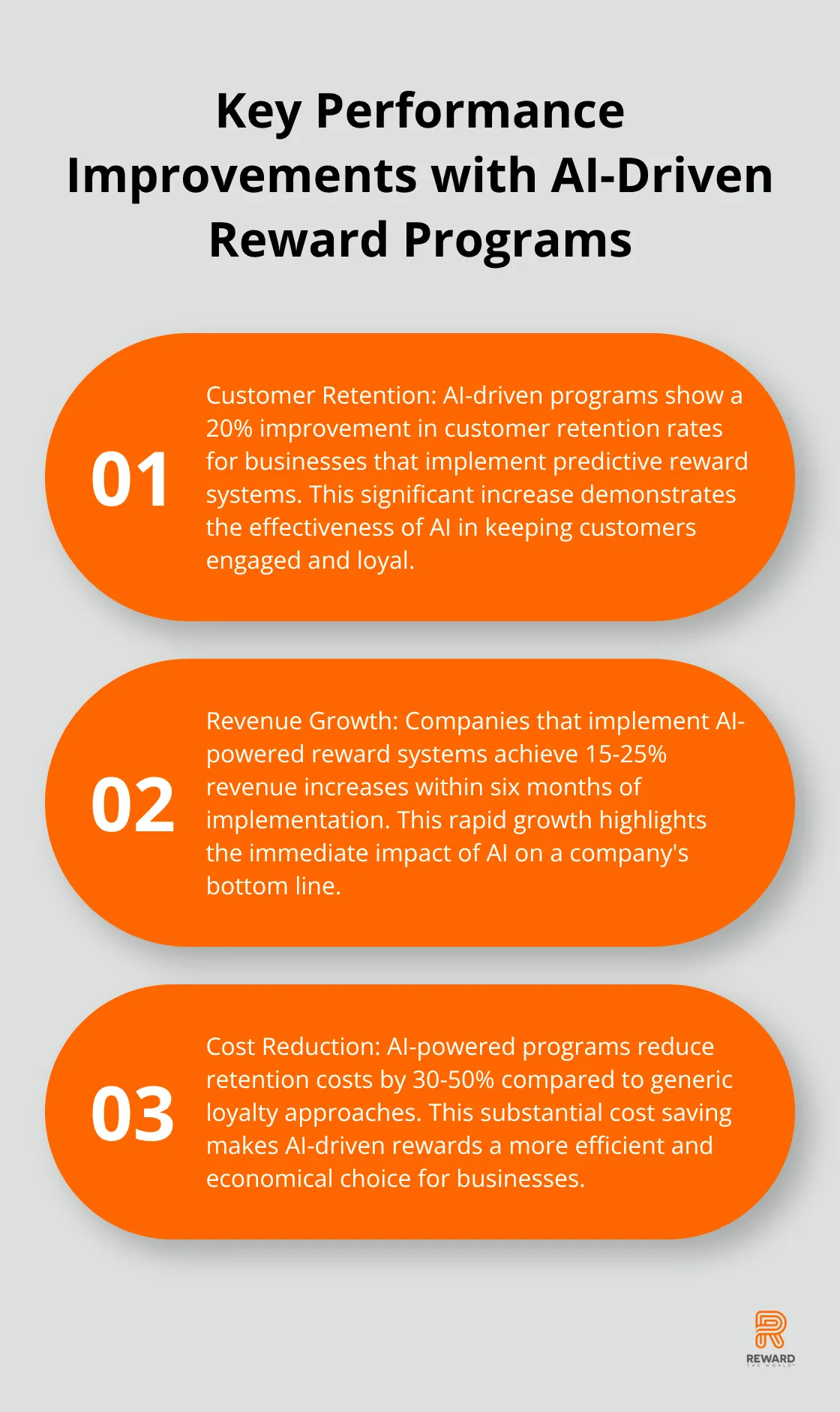
Customer acquisition costs have surged 222% over the past decade, while traditional loyalty programs show declining engagement rates below 30%. Companies struggle with one-size-fits-all reward systems that fail to connect with individual customer preferences.
We at Reward the World see incentive automation as the game-changing solution. AI-powered rewards analyze real-time behavioral data to deliver personalized experiences that actually drive retention.
Why Customer Retention Has Become Nearly Impossible
Customer Acquisition Costs Hit Breaking Point
Businesses face acquisition costs that have increased 222% over the past decade. This surge makes new customer acquisition unsustainable for most companies. Bain & Company research shows that companies spend 5 to 25 times more to acquire new customers than to retain existing ones.
Software companies now spend $1,305 to acquire each new customer, while e-commerce brands average $87 per acquisition (according to HubSpot data). These escalating costs force companies to prioritize retention strategies, yet most struggle with outdated approaches that fail to generate meaningful results.

Traditional Loyalty Programs Generate Dismal Results
The average customer retention rate across D2C brands sits at just 28%. Traditional loyalty programs show engagement rates below 30%, creating a massive disconnect between investment and results. Customers participate in an average of 17 loyalty programs but remain actively engaged in fewer than half of them.
Generic point-based systems and one-size-fits-all rewards create customer fatigue rather than loyalty. Companies continue to invest billions in loyalty infrastructure that produces minimal ROI because these programs ignore individual customer preferences and behavioral patterns.
Static Rewards Cannot Match Modern Expectations
Static reward structures cannot compete with personalized experiences that modern consumers expect. The loyalty management market reached $12.07 billion in 2024, yet most programs fail to increase retention rates meaningfully. Generic promotional emails and standard tier-based rewards generate customer indifference instead of the emotional connection needed for long-term loyalty.
Companies that persist with traditional approaches watch their customer lifetime values decline while competitors leverage data-driven personalization to build stronger relationships. This gap between customer expectations and program delivery creates the perfect opportunity for AI-powered solutions to transform how businesses approach customer retention.
How AI Transforms Reward Personalization
AI-powered reward systems analyze customer behavior patterns in real-time to deliver personalized experiences that traditional programs cannot match. Machine learning algorithms process purchase history, browsing patterns, engagement frequency, and demographic data to create individual customer profiles that adapt continuously. Netflix leverages similar AI technology to personalize content recommendations, while Amazon uses behavioral data to suggest products. Companies that implement AI-driven personalization see up to 35% higher redemption rates compared to traditional segmentation methods, while 75% of American consumers show higher loyalty to brands that offer personalized experiences.

Real-Time Behavioral Response Systems
Modern AI systems respond to customer actions within milliseconds and adjust reward offers based on immediate behavior signals. Starbucks Deep Brew platform demonstrates this capability by analyzing customer data to create targeted promotions that increase engagement rates significantly. Puma achieved nearly 20% higher average order values through predictive AI implementation via Google Cloud. These systems track shopping cart abandonment, browsing duration, and interaction patterns to trigger personalized rewards at optimal moments. AI-powered chatbots serve as 24/7 virtual assistants, handle loyalty inquiries, and suggest relevant rewards based on individual customer histories and preferences.
Predictive Churn Prevention Through Advanced Analytics
Predictive analytics identify customers at risk of disengagement and enable proactive retention strategies before churn occurs. Machine learning models analyze diverse signals that include purchase frequency, engagement drops, and sentiment changes to predict customer behavior patterns. Companies that use AI-driven insights can implement targeted reactivation campaigns for high-value former customers based on past purchasing behavior. Dynamic reward structures optimize in real-time and adjust appealing incentives based on customer response data to prevent loyalty program fatigue. Sentiment analysis processes customer feedback to identify improvement areas and emerging needs (allowing brands to address issues before they lead to customer loss).
These AI capabilities create the foundation for sophisticated reward programs, but successful implementation requires strategic planning and proper system integration to maximize their potential impact.
How Do You Implement AI-Driven Rewards Successfully
Successful AI reward program implementation starts with seamless CRM integration that connects customer touchpoints across all channels. Companies must integrate their existing Salesforce, HubSpot, or Microsoft Dynamics systems with AI platforms that process behavioral data in real-time. This integration requires API connections that sync purchase history, email engagement rates, website interactions, and support ticket data into unified customer profiles.
Businesses should establish automated data pipelines that update customer insights every 15 minutes to maintain accuracy for real-time reward triggers. The most effective implementations use customer data platforms that consolidate information from mobile apps, e-commerce sites, social media interactions, and offline purchases into single customer views.
Data Framework Architecture That Actually Works
Smart data collection focuses on behavioral signals that predict customer actions rather than demographic information alone. Companies need systems that track cart abandonment patterns, browsing duration, product view sequences, and engagement frequency across different channels. Google Analytics 4 provides advanced behavioral tracking capabilities, while platforms like Segment enable real-time data streaming to AI systems.
The data framework should capture micro-moments like email open rates, click-through patterns, and time spent viewing specific product categories. Successful programs collect at least 50 data points per customer interaction to generate accurate predictions. Machine learning models require minimum datasets of 10,000 customer interactions to achieve effective churn prediction through ensemble methods.
Performance Measurement Through Strategic KPIs
Companies should track customer revenue increases of 15-25% within six months of AI implementation as the primary success metric. Redemption rates typically improve from 30% to 65% when AI personalizes reward offerings based on individual preferences. AI-driven programs show 20% improvement in customer retention rates for businesses that implement predictive reward systems.
Churn reduction rates of 12-18% indicate successful AI integration, while average order values should increase by 10-15% through targeted reward timing. Monitor engagement frequency changes, with successful programs achieving 40% higher interaction rates compared to traditional systems. Track cost per retained customer as the ultimate ROI metric (with AI-powered programs reducing retention costs by 30-50% compared to generic loyalty approaches).

Final Thoughts
AI-powered rewards represent the most significant advancement in customer retention technology since the introduction of loyalty programs. Companies that implement these systems achieve 15-25% revenue increases within six months, while traditional programs continue to struggle with 30% engagement rates. The data speaks clearly: businesses that embrace incentive automation gain competitive advantages that compound over time.
The future outlook shows intelligent loyalty programs will become standard practice rather than innovative experiments. Machine learning capabilities will expand beyond behavioral prediction to emotional intelligence, creating reward experiences that anticipate customer needs before they express them. Cross-platform loyalty ecosystems will emerge, allowing AI from different marketing technologies to create seamless customer journeys across multiple touchpoints.
Businesses that consider AI integration should start with comprehensive data collection frameworks and CRM system connections. The implementation process requires strategic planning, but the results justify the investment through reduced churn rates and increased customer lifetime values (with some companies seeing 30-50% cost reductions in retention efforts). We at Reward the World provide the global incentives platform infrastructure needed to deploy AI-powered reward systems at scale.
